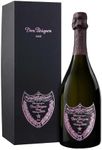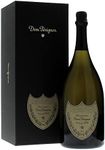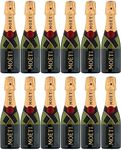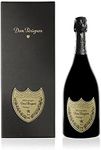We Use CookiesWe use cookies to enhance the security, performance,
functionality and for analytical and promotional activities. By continuing to browse this site you
are agreeing to our privacy policy
Best Champagnes
From leading brands and best sellers available on the web.#2

Moët & Chandon
16%OFF
Moët & Chandon Impérial Brut Champagne, Gift Box, 75cl
View Product
#3

Veuve Clicquot
Veuve Clicquot Yellow Label Champagne, Gift Box, 75cl
View Product
#4

Dom Pérignon
Dom Perignon Rosé Champagne Vintage 2008 In Gift Box | 12% ABV
View Product
#5

Bollinger
20%OFF
Bollinger Special Cuvee Non Vintage Champagne | 75 cl
View Product
#6

Dom Pérignon
Dom Perignon Vintage Champagne Magnum in Gift Box
View Product
#7

Louis Roederer
Louis Roederer Cristal Vintage Champagne 75cl Bottle
View Product
#8

Dom Pérignon
DOM PERIGNON CHAMPAGNE IN GIFT BOX 2015
View Product
#9

Dom Pérignon
Dom Pérignon Vintage 2013 Champagne, 75cl
View Product
#10

Laurent Perrier
8%OFF
Laurent Perrier Cuvee Rose Brut NV Champagne 75cl
View Product
Buying Guide for the Best Champagnes
Choosing the right champagne can elevate any celebration or special occasion. The key to selecting the perfect bottle lies in understanding the different types and characteristics of champagne, which can vary widely in terms of taste, sweetness, and origin. By familiarizing yourself with these aspects, you can make an informed decision that suits your palate and the occasion.Type of ChampagneChampagne comes in several types, primarily determined by the grape varieties used and the production process. The main types include Blanc de Blancs, made exclusively from Chardonnay grapes, which tends to be light and crisp; Blanc de Noirs, made from Pinot Noir and/or Pinot Meunier, offering a fuller body; and Rosé, which has a hint of red fruit flavor. Your choice should depend on your taste preference: if you enjoy a lighter, more citrusy flavor, opt for Blanc de Blancs; for a richer taste, Blanc de Noirs might be more suitable; and for a fruity, slightly sweet option, consider Rosé.
Sweetness LevelThe sweetness of champagne is categorized by terms like Brut, Extra Brut, Sec, Demi-Sec, and Doux, which indicate the amount of sugar added during production. Brut is the most common and is quite dry, with very little sugar, making it versatile for many occasions. Extra Brut is even drier, while Sec and Demi-Sec are progressively sweeter, with Doux being the sweetest. Consider the occasion and your personal preference: for a versatile option that pairs well with most foods, Brut is ideal; for a dessert pairing, a Demi-Sec or Doux might be more appropriate.
Vintage vs. Non-VintageVintage champagne is made from grapes harvested in a single year and is often considered more prestigious, with complex flavors that develop over time. Non-vintage champagne, on the other hand, is a blend of grapes from multiple years, offering consistency and a more approachable price point. If you're celebrating a special occasion or want a more nuanced flavor profile, a vintage champagne might be worth the investment. For more casual gatherings or if you're new to champagne, a non-vintage option can provide a delightful experience without the complexity.
Region of OriginWhile all true champagne comes from the Champagne region of France, different areas within this region can impart unique characteristics to the wine. For example, the Montagne de Reims is known for robust, full-bodied champagnes, while the Côte des Blancs produces more elegant, Chardonnay-based wines. Understanding these regional differences can help you choose a champagne that aligns with your taste preferences. If you prefer a more robust flavor, look for champagnes from Montagne de Reims; for a lighter, more refined taste, consider those from Côte des Blancs.
Aging PotentialChampagne can be enjoyed young or aged for several years, with aging often enhancing its complexity and depth of flavor. Non-vintage champagnes are typically best consumed within a few years of purchase, while vintage champagnes can benefit from longer aging, sometimes up to a decade or more. If you're looking for a champagne to enjoy soon, a non-vintage option is ideal. However, if you're planning to store it for a special future occasion, investing in a vintage champagne with good aging potential can be a rewarding choice.





